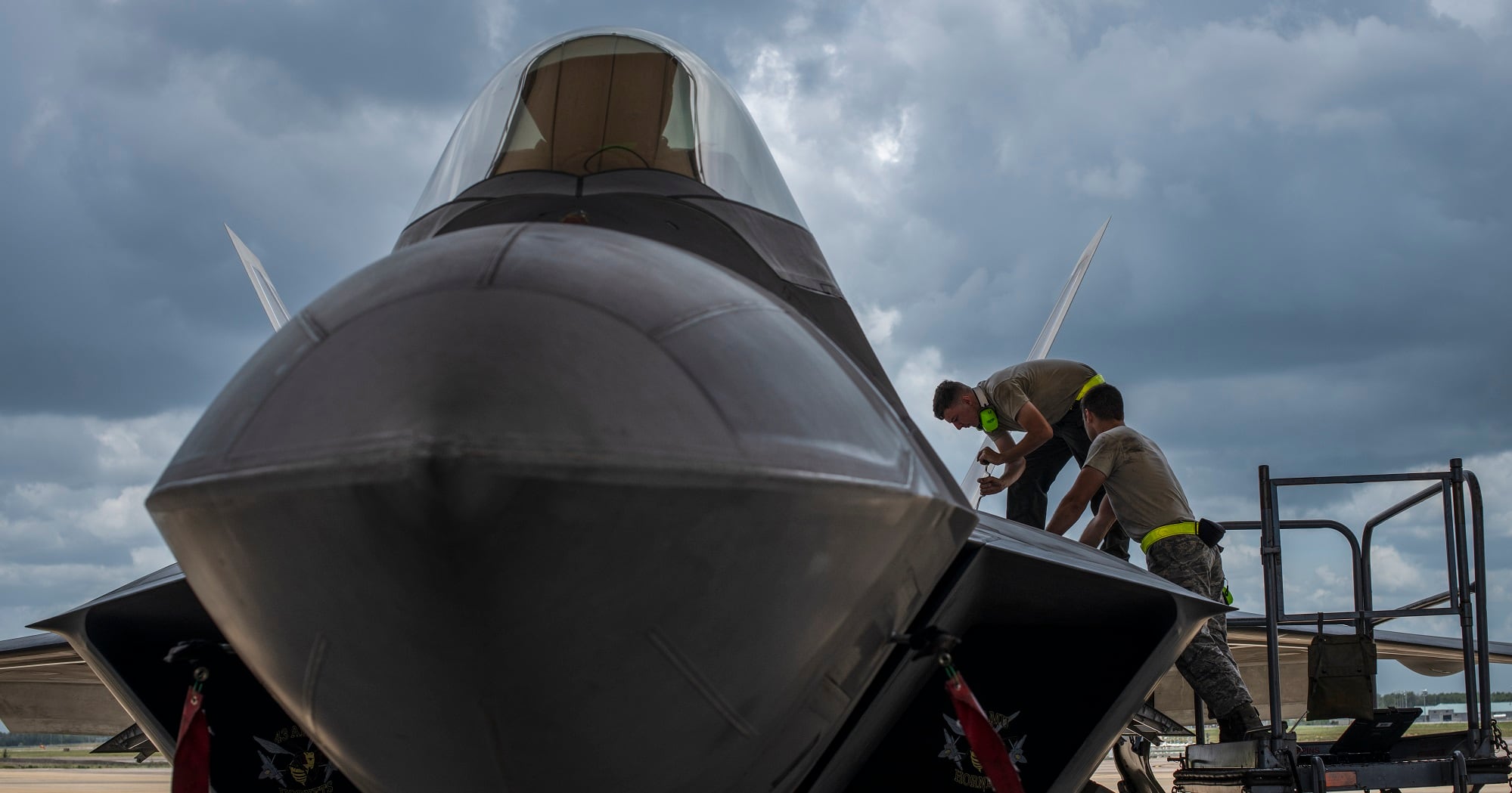An F-22 Raptor fighter jet that was totaled last spring in an accident at Eglin Air Force Base, Florida, crashed because of a “maintenance error made after the aircraft was washed,” a service spokesperson said Tuesday.
The undisclosed error “impacted control inputs transmitted to the aircraft” while flying about 12 miles away from the main base during routine training, the Air Combat Command spokesperson said in an email.
“Upon takeoff, the pilot noticed a flight control system advisory and elected to continue with takeoff,” the spokesperson said. “Shortly after the aircraft became airborne, the pilot began having trouble controlling the aircraft and declared an emergency. While a recovery plan was being coordinated, the pilot continued to have issues with the aircraft and ejected.”
RELATED

The unnamed pilot, who was assigned to the 43rd Fighter Squadron in the 325th Fighter Wing — which relocated to Eglin after Hurricane Michael destroyed nearby Tyndall AFB in 2018 — suffered minor, undisclosed injuries.
Only the pilot was on board the Raptor, and the crash did not hurt any civilians or non-military property on the ground.
The F-22 was destroyed at a cost of around $201 million. Nearly half of the nine major F-22 mishaps in fiscal 2020 occurred at the 325th Fighter Wing, including the May 2020 incident.
The Air Force recently revealed, more than a year after the accident, that it had not convened an accident investigation board to look into the crash.
ACC Deputy Commander Lt. Gen. Christopher Weggeman, along with Air Force Judge Advocate General Lt. Gen. Jeffrey Rockwell, waived the usual requirement for an AIB because of operational security concerns, the spokesperson said. A commander-directed investigation and a safety investigation board took place instead.
RELATED

Safety investigation boards take priority over accident investigation boards so the Air Force can determine whether a fleet-wide issue could jeopardize national security, according to the service. AIBs use a safety board’s report to bolster further interviews, tests and other fact-finding as part of their own deep-dive. SIBs take about a month to complete; AIBs can take at least two to three times longer.
Commander-directed investigations also gather information about individual conduct or systemic problems and can take as long as the officer who orders the analysis wants.
The results of the safety and commander-directed investigations will not be released to the public, ACC said. The Air Force did not answer whether it believes other Raptors could be affected by the same issue, or whether the investigations have led to further inspections or repairs.
Rachel Cohen is the editor of Air Force Times. She joined the publication as its senior reporter in March 2021. Her work has appeared in the Washington Post, the Frederick News-Post (Md.), Air and Space Forces Magazine, Inside Defense, Inside Health Policy and elsewhere.





